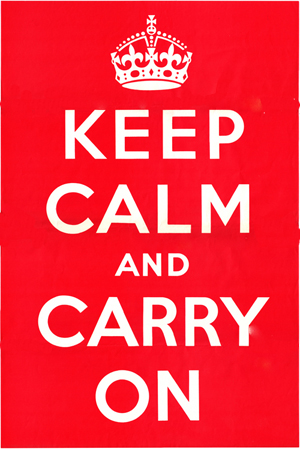Main render script¶
Set up the geometry
Load the data
Find the streamline start points
Propagate the streamlines
Draw the text along the streamlines
Add a land-sea mask
#!/usr/bin/env python
# Plot a wind field using text strings from the shipping forecast
import os
import sys
import iris
import iris.coords
import iris.coord_systems
import iris.fileformats
import iris.util
iris.FUTURE.datum_support = True # I don't care about datums
import numpy as np
from scipy.stats.qmc import PoissonDisk
from Met_palettes import MET_PALETTES
import matplotlib
from matplotlib.backends.backend_agg import FigureCanvasAgg as FigureCanvas
from matplotlib.figure import Figure
from matplotlib.patches import PathPatch
from copy import deepcopy
from datetime import datetime
import random
from cube import plot_cube
from streamlines import wind_vectors
from textPath import map_path, string_to_path, curve_length, path_length, trim_curve
from collisions import collision_check, collision_cut
# Parameters
plot_width = 3200
plot_height = 2100
plot_x = [-18.3 / 0.6, 3 / 0.6] # plot range lat & lon
plot_y = [48, 62]
data_x = [-22.5 / 0.6, 8 / 0.6]
data_y = [43, 67]
data_resolution = 0.05 # degrees (units of u wind)
collision_resolution = 0.05 # same
# Cube for the wind field
data_cube = plot_cube(
data_resolution, xmin=data_x[0], xmax=data_x[1], ymin=data_y[0], ymax=data_y[1]
)
# Cube for the collision detection
collision_cube = plot_cube(
collision_resolution, xmin=data_x[0], xmax=data_x[1], ymin=data_y[0], ymax=data_y[1]
)
collision_cube.data = np.zeros(collision_cube.data.shape)
iterations = 250 * 4 # How far the streamlines propagate (max)
epsilon = 0.005 / 4
poisson_radius = 0.005 # Figure fraction - separation of streamline start points
scheme = MET_PALETTES["Hokusai2"]
bgcol = (1, 1, 0.95, 1) # "#ffe6b7" # (255 / 255, 255 / 255, 255 / 255, 1.0)
font_size = 0.35 # Scaling for the TextPath - 4 is about right to match the degrees
fprop = "Serif" # font choice
# Load the land mask
land_mask = iris.load_cube(
"%s/fixed_fields/land_mask/opfc_global_2019.nc" % os.getenv("DATADIR")
)
land_mask = land_mask.regrid(data_cube, iris.analysis.Linear())
# Load the wind field
fctime = datetime(2024, 12, 7, 6)
vwnd = iris.load_cube(
"%s/opfc/glm/2024/12/07.pp" % os.getenv("SCRATCH"),
iris.AttributeConstraint(STASH=iris.fileformats.pp.STASH(1, 3, 226))
& iris.Constraint(forecast_period=0)
& iris.Constraint(forecast_reference_time=fctime),
)
uwnd = iris.load_cube(
"%s/opfc/glm/2024/12/07.pp" % os.getenv("SCRATCH"),
iris.AttributeConstraint(STASH=iris.fileformats.pp.STASH(1, 3, 225))
& iris.Constraint(forecast_period=0)
& iris.Constraint(forecast_reference_time=fctime),
)
u10m = uwnd.regrid(data_cube, iris.analysis.Linear())
# iris.save(u10m, "u10m.nc")
v10m = vwnd.regrid(data_cube, iris.analysis.Linear())
# v10m.data *= -1 # Want +ve going north
# iris.save(v10m, "v10m.nc")
# Load the shipping forecast
with open("./forecast_20241207.txt", "r") as file:
# Read all lines into a list of strings
lines = file.readlines()
# Remove blank lines from the list
lines = [line.strip() for line in lines if line.strip()]
# Strip out the lines with assigned start points
alines = [line for line in lines if line.startswith("[")]
lines = [line for line in lines if not line.startswith("[")]
# Find longest line shorter than some given curve
def line_shorter_than(linePaths, x, y):
max_length = curve_length(x, y)
short_line = None
for line in linePaths:
pl = path_length(linePaths[line])
if pl < max_length:
if short_line is None or pl > path_length(linePaths[short_line]):
short_line = line
return short_line
# Set up the plot
fig = Figure(
figsize=(int(plot_width / 100), int(plot_height / 100)),
dpi=100,
facecolor=bgcol,
edgecolor=None,
linewidth=0.0,
frameon=True,
subplotpars=None,
tight_layout=None,
)
canvas = FigureCanvas(fig)
ax = fig.add_axes([0, 0, 1, 1])
ax.set_axis_off() # Don't want surrounding x and y axis
ax.set_xlim(plot_x[0], plot_x[1])
ax.set_ylim(plot_y[0], plot_y[1])
ax.set_aspect("auto")
# Add the assigned lines
for line in alines:
udx = line.find(",")
x = float(line[1:udx])
udx2 = line.find(",", udx + 1)
y = float(line[udx + 1 : udx2])
udx3 = line.find("]", udx2 + 1)
fonts = float(line[udx2 + 1 : udx3])
line = line[udx3 + 1 :]
wv = wind_vectors(
u10m,
v10m,
np.array([x]),
np.array([y]),
epsilon=epsilon,
iterations=iterations * 2,
)
lp = string_to_path(line, fsize=fonts, fprop=fprop, sy=1)
npath = map_path(lp, wv[0, 0, :], wv[0, 1, :])
npatch = PathPatch(
npath,
facecolor="red",
edgecolor="black",
linewidth=0.25,
zorder=30,
)
npatch2 = PathPatch(
npath,
facecolor="red",
edgecolor="black",
linewidth=0.25,
alpha=0.25,
zorder=80,
)
ax.add_artist(npatch)
ax.add_artist(npatch2)
collision_check(collision_cube, npath.vertices[:, 0], npath.vertices[:, 1])
if True:
# Generate a set of origin points for the text strings
engine = PoissonDisk(d=2, radius=poisson_radius)
sample = engine.fill_space()
sample = sample * (data_x[1] - data_x[0])
sample[:, 0] += data_x[0]
sample[:, 1] += data_y[0]
sample = sample[(sample[:, 1] > data_y[0]) & (sample[:, 1] < data_y[1])]
wpx = sample[:, 0]
wpy = sample[:, 1]
text_points = wind_vectors(
u10m,
v10m,
wpx,
wpy,
epsilon=epsilon,
iterations=iterations,
)
count = 0
for fontSize in [0.5, 0.45, 0.4, 0.35, 0.3, 0.25, 0.2]:
# # Add the streamlines in random order
line_sequence = random.sample(
list(range(text_points.shape[0])), text_points.shape[0]
)
# Make a TextPath for each line (to get the size)
linePaths = {}
for line in lines:
linePaths[line] = string_to_path(line, fsize=fontSize, fprop=fprop, sy=1)
olinePaths = deepcopy(linePaths)
for streamline in line_sequence:
try:
x = text_points[streamline, 0, :].copy()
y = text_points[streamline, 1, :].copy()
x, y = collision_cut(collision_cube, x, y)
short_line = line_shorter_than(linePaths, x, y)
if short_line is None:
continue
# random_line = random.choice(short_lines)
x, y = trim_curve(x, y, path_length(linePaths[short_line]))
if len(x) < 4: # Too short - try again
print("short x")
continue
npath = map_path(linePaths[short_line], x, y)
fcol = facecolor = scheme["colors"][count % len(scheme["colors"])]
npatch = PathPatch(
npath,
facecolor=fcol,
edgecolor="black",
linewidth=0.25,
zorder=30,
)
npatch2 = PathPatch(
npath,
facecolor=fcol,
edgecolor="black",
linewidth=0.25,
alpha=0.25,
zorder=80,
)
if not collision_check(
collision_cube, npath.vertices[:, 0], npath.vertices[:, 1]
):
ax.add_artist(npatch)
ax.add_artist(npatch2)
count += 1
# del linePaths[random_line]
line_sequence.remove(streamline)
if len(linePaths) == 0:
linePaths = deepcopy(olinePaths)
continue
except Exception as e:
print(e)
continue
# Add the land mask - temporary addition
lats = land_mask.coord("latitude").points
lons = land_mask.coord("longitude").points
mask_img = ax.pcolorfast(
lons,
lats,
land_mask.data,
cmap=matplotlib.colors.ListedColormap(
((1.0, 1.0, 0.9, 0), (0.975, 0.975, 0.95 * 0.975, 1.0))
),
vmin=0,
vmax=1,
alpha=1.0,
zorder=50,
)
fig.savefig("wind_words.webp")
